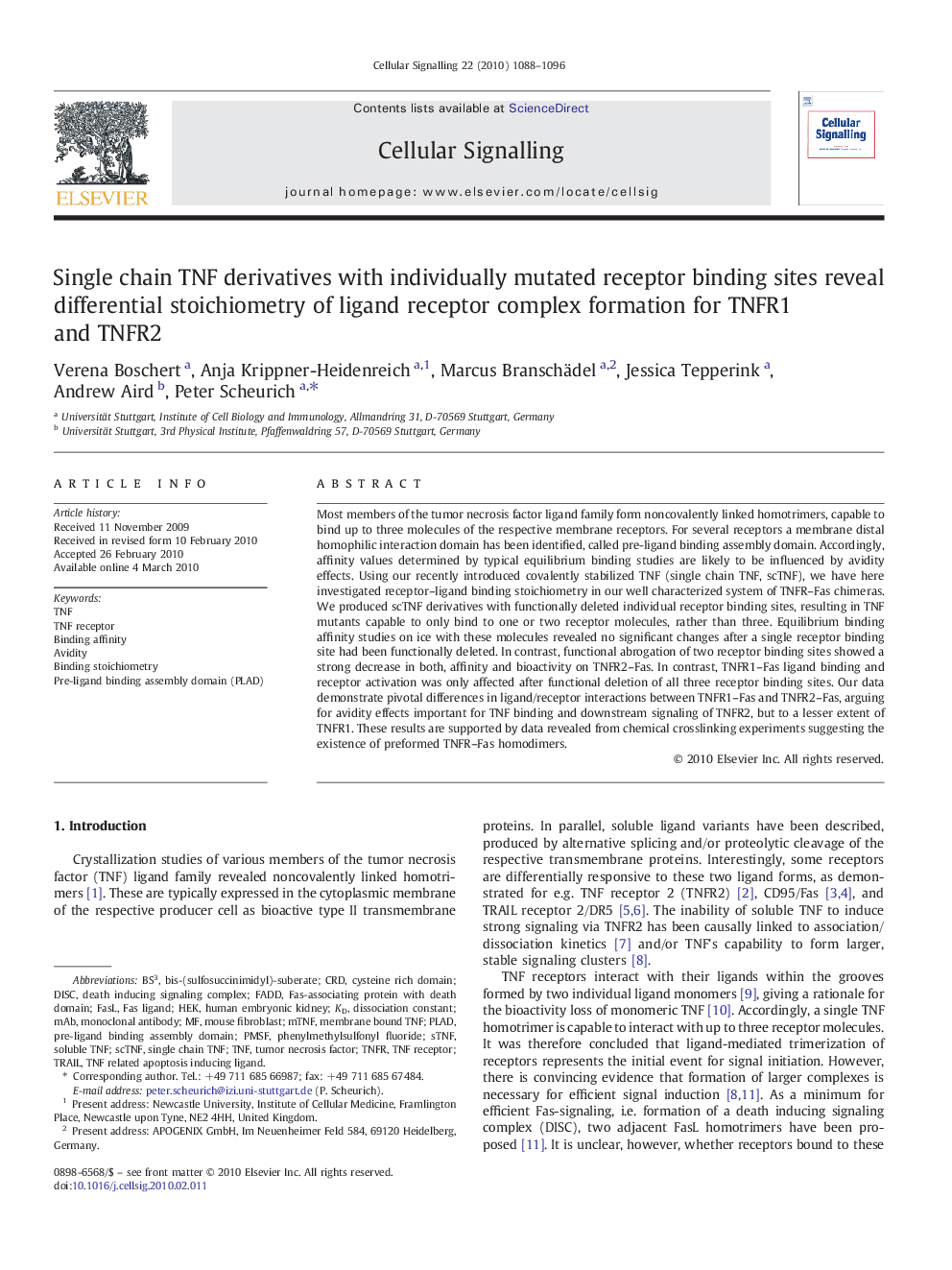| کد مقاله | کد نشریه | سال انتشار | مقاله انگلیسی | نسخه تمام متن |
|---|---|---|---|---|
| 1963857 | 1058511 | 2010 | 9 صفحه PDF | دانلود رایگان |

Most members of the tumor necrosis factor ligand family form noncovalently linked homotrimers, capable to bind up to three molecules of the respective membrane receptors. For several receptors a membrane distal homophilic interaction domain has been identified, called pre-ligand binding assembly domain. Accordingly, affinity values determined by typical equilibrium binding studies are likely to be influenced by avidity effects. Using our recently introduced covalently stabilized TNF (single chain TNF, scTNF), we have here investigated receptor–ligand binding stoichiometry in our well characterized system of TNFR–Fas chimeras. We produced scTNF derivatives with functionally deleted individual receptor binding sites, resulting in TNF mutants capable to only bind to one or two receptor molecules, rather than three. Equilibrium binding affinity studies on ice with these molecules revealed no significant changes after a single receptor binding site had been functionally deleted. In contrast, functional abrogation of two receptor binding sites showed a strong decrease in both, affinity and bioactivity on TNFR2–Fas. In contrast, TNFR1–Fas ligand binding and receptor activation was only affected after functional deletion of all three receptor binding sites. Our data demonstrate pivotal differences in ligand/receptor interactions between TNFR1–Fas and TNFR2–Fas, arguing for avidity effects important for TNF binding and downstream signaling of TNFR2, but to a lesser extent of TNFR1. These results are supported by data revealed from chemical crosslinking experiments suggesting the existence of preformed TNFR–Fas homodimers.
Journal: Cellular Signalling - Volume 22, Issue 7, July 2010, Pages 1088–1096